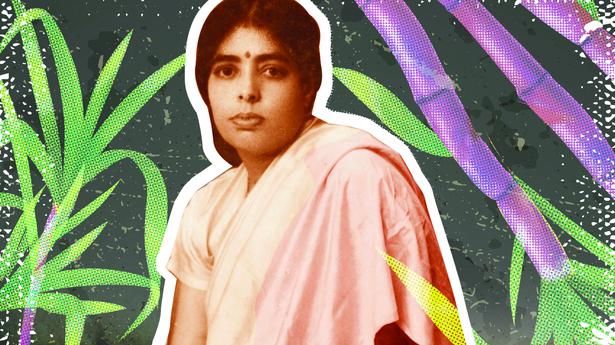
Janaki Ammal, the nomad scientist
The Hindu
On her 125th birth anniversary, a new book on the extraordinary life of the first Indian woman to be awarded a Ph.D in botanical science and create a sugarcane-maize hybrid
Edavaleth Kakkat Janaki Ammal was the first Indian woman to be awarded a Ph.D in the botanical sciences. She received the degree from the University of Michigan , in 1931, where she specialised in plant cytology. This distinction alone must warrant a celebration of her work, but her life and achievements remain largely unknown to us except for a few articles. This, despite the fact that in 1945, Janaki, often referred to as the first Indian woman botanist, co-authored Chromosome Atlas of Cultivated Plants that scientists fall back on to this day.
ALSO READ The sidelined goddess of Botany
In the 125th year since she was born, readers can look forward to a well-researched biography of this outstanding woman scientist. Chromosome Woman, Nomad Scientist: E.K. Janaki Ammal, a Life 1897-1984, by Savithri Preetha Nair, 57, will likely be the first expansive archive-based analytical biography of an Asian woman scientist.
Nair first came across Janaki’s name among the list of members for the year 1932 of the Eugenics Society, earlier called the Galton Institute, London. This was the sole Indian name mentioned there, which piqued Nair’s curiosity. She describes the moment: “It said E. K. Janaki Ammal, Coimbatore, and I found no other Indian names that year; it would take another 35 years to have anthropologist L.K. Ananthakrishna Iyer’s name there.”
“Janaki is at last going to be very much visible, she’s going to be known,” says Nair, who is concerned that some accounts of her life dwell more on her background rather than her science. Nair is a historian of science and an independent researcher based in London and Kerala. She completed her doctorate in 2003 from the School of Oriental and African Studies, University of London, on museums and the shaping of the sciences in India. “The interest has always been in Janaki’s mixed-race origin. I think that her work was far more important than all of that.”
It has been a long haul for Nair, who spent a third of her writing life looking for Janaki and producing this biography. It was both luck and a lot of forensic searching, sometimes serendipitous, that led the author to archival material on the scientist who was born in 1897, in Thalassery, in the erstwhile Malabar region, part of the Madras Presidency. Janaki studied at the Queen Mary’s College and Presidency College, Madras and taught at the Women’s Christian College in the city for five years, with breaks.
While the letters Janaki received have not been preserved, much of her correspondence with people have been archived in repositories. “She was very witty,” says Nair, describing her spirit. “She had a wonderful style of writing, and she always brought in fairy tales,” she recalls, citing an occasion when the botanist called herself the Cinderella of the Sugarcane Breeding Institute in Coimbatore. “That’s how she felt when she was vindicated years later, when a sugarcane and maize hybrid, which she had crafted — that scientists at the institute doubted — flowered. They had thought it was not a genuine cross.” She chose this combination as a challenge to produce a difficult inter-generic cross.

In a study published in the journal Mammalian Biology on December 23, 2024, researchers compared the calls of Asian elephants based on their age, sex, and behaviour. They found the duration of trumpets remained fairly consistent across all age classes for both male and female Asian elephants but roars and roar-rumbles got longer with age.












